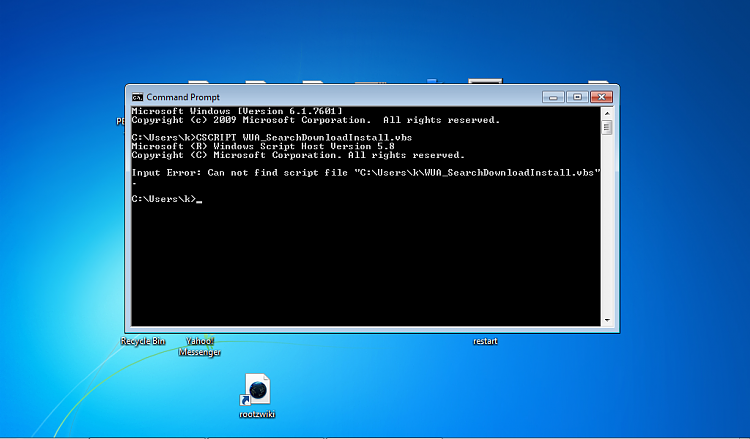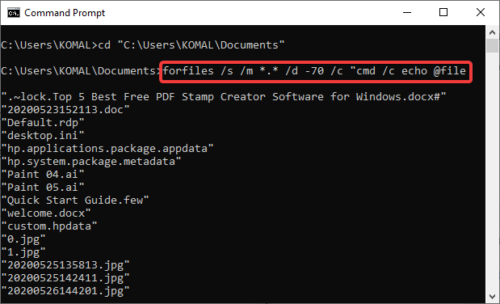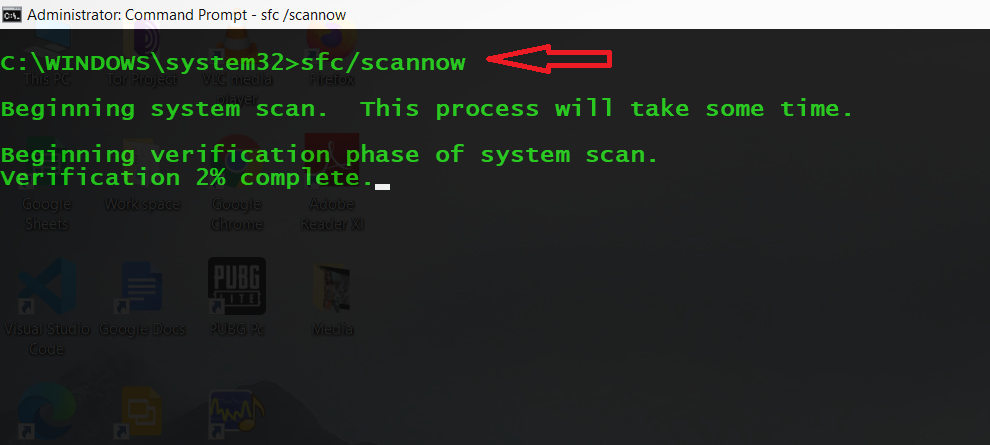

- Top command prompt commands full#
- Top command prompt commands windows 10#
- Top command prompt commands Pc#
- Top command prompt commands windows#
It represents how much memory the program is able to access at the present moment it stands for the virtual size of a process, which is the sum of memory it is actually using, VIRT: It is the amount of virtual memory used by the process. The relation between nice value and priority is PR = 20 + NI Nice value range is -20 to +19 where -20 is highest, 0 default and +19 is lowest. NI: It is the nice value of the process corresponding to a user-space concept. For processes running under real-time, the value of the field is RT Thus a process with the neutral nice value of zero has a kernel priority of 20. For normal processes, the kernel priority is simply +20 from the nice value. PR: it is the process's actual priority, as viewed by the Linux kernel, the scheduling priority of the process. It helps to exactly identify the processes launched by a particular user USER: The effective user name of the owner of the processes.

PID: The Process ID represented by a unique value which uniquely identifies a process. So to understand how the top command functions, we must know the role of each column in order to know where is to information that we should need a) Fields/Columnsīy default, top shows some attributes associated with processes and the type of information is represented in column.

There are some information in differents columns and horizontals lines showing summary about different system parameters, and following these are the processes and their attributes in columns. Running by default, the top command displays output like this: To see running process, on terminal run the command below # top But we need to understand the meaning of different sections of this output. Top command displays a lot of information about the running system. Default Top Commandįirst of all, let us understand what the output says. Many commands are available when top is running. The top command is an interactive command. In this article, we explore the top command in detail. It is used extensively for monitoring the load on a server. One of the most important tools for a system administrator. If you suspect that one of your drives may have issues, you can initiate this same scan manually as well.The top command in Linux displays the running processes on the system.
Top command prompt commands windows#
You may already be familiar with chkdsk. After an unexpected shutdown, Windows will sometimes halt a reboot to run chkdsk, in order to check for bad sectors and repair errors on the disk. As a a slightly faster alternative, you can also open a PowerShell window as an administrator (Win+X or right-clicking on the Start button). It’ll work the same as the Command Prompt. Right-click on the result for the Command Prompt, then choose Run as administrator. To open a Command prompt as an administrator, hit the Windows key or click on Start button, then type cmd. Running sfc /scannow will check for corrupted files on your system and attempt to repair any files with problems. When parts of the Windows interface start acting up-say, disappearing taskbar icons-it may be time to lean on the System File Checker. It’s more rare that we want only the information that ping reveals, hence tracert’s place on this list. Ping is better for answering the question “Is there a connection and how fast is it?”, while tracert answers both that and “Where does the connection fail?”.
Top command prompt commands windows 10#
By default, the report will save to your Windows 10 user folder under the name “battery-report.html” If you’ve felt like your battery life has taken a sudden dip, this information will share the battery level at certain points in time, along with the time it recently took to drain since last plugged in.
Top command prompt commands Pc#
The powercfg command can be of use to both desktop PC and laptop owners, especially if you need to toggle the hibernation feature ( powercfg /hibernate) or begin an investigation into what’s disturbing your computer from sleep ( powercfg /lastwake).īut laptops benefit the most from the gem among powercfg’s operations: the battery report ( powercfg /batteryreport).
If you never use Run for anything else, it’ll remember this command whenever you next call it up, making it slightly faster than opening a fresh Command Prompt window each time. You can also turn off history while you’re in that menu.)Īn alternative way to use this command is to open Windows 10’s Run command window (Win + R) and enter cmd /c “echo off | clip”.
Top command prompt commands full#
(This command won’t clear your full Clipboard history though, so you’ll have to use Windows 10’s Clipboard settings to do that. Entering this string into the Command Prompt clears the last item on your Clipboard-helpful when you’ve copied sensitive information and are done with it.


 0 kommentar(er)
0 kommentar(er)
